 | ||
The Trostinets extermination camp, also known as Maly Trostinets, Maly Trastsianiets and Trascianec (see alternative spellings), was a World War II Nazi German death camp located near the village of Maly Trostinets (Малы Трасцянец, "Little Trostinets") on the outskirts of Minsk in Reichskommissariat Ostland. It operated between July 1942 and October 1943, by which time, virtually all Jews remaining in Minsk had been murdered and buried there.
Contents
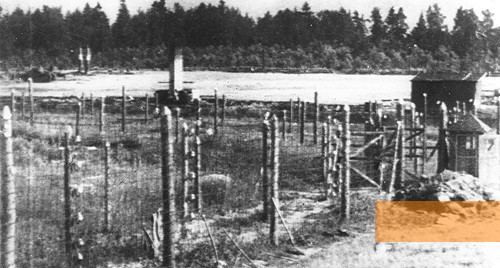
History
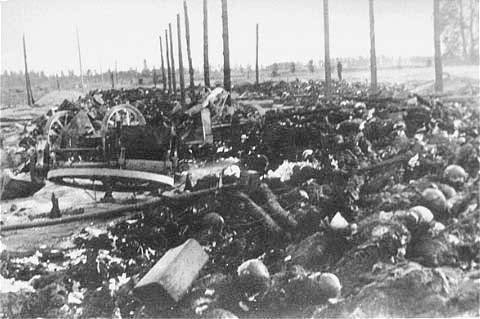
Originally built in the summer of 1941 on the site of a Soviet kolkhoz, a collective farm 200 hectares (490 acres) in size, Trostinets was set up by Nazi Germany as a concentration camp with no fixed killing facilities, for the Soviet prisoners of war who had been captured during Operation Barbarossa launched against the Soviet Union on 22 June 1941.
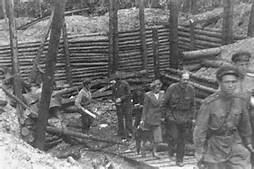
The camp became a Vernichtungslager (extermination camp) on 10 May 1942 when the first consignment of Jews was brought in under the guise of "resettlement". Jews from Austria, Germany and the Czech Republic were murdered there. The Holocaust transports organized by the SS were sent from Berlin, Hanover, Dortmund, Münster, Düsseldorf, Cologne, Frankfurt am Main, Kassel, Stuttgart, Nuremberg, Munich, Breslau, Königsberg, Vienna, Prague, Brünn, and Theresienstadt. In most cases, the Jews were killed immediately upon arrival. They were trucked from the train stop to the nearby killing grounds at Blagovshchina (Благовщина) and Shashkovka (Шашковка) forests and shot in the back of the neck.
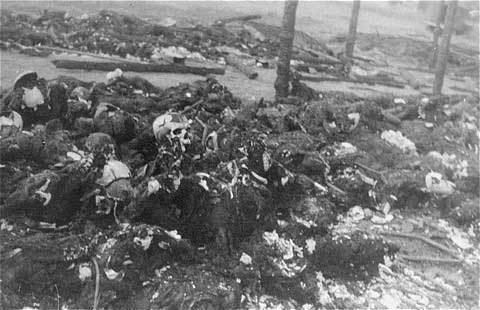
The primary purpose of the camp was the killing of Jewish prisoners of the Minsk Ghetto and the surrounding area. Firing squad was the chief execution method. Mobile gas chambers deployed at Trostinets performed a subsidiary if not insignificant function in the killing process. These were called "gas vans". Baltic German SS-Scharführer Heinrich Eiche was the camp administrator.
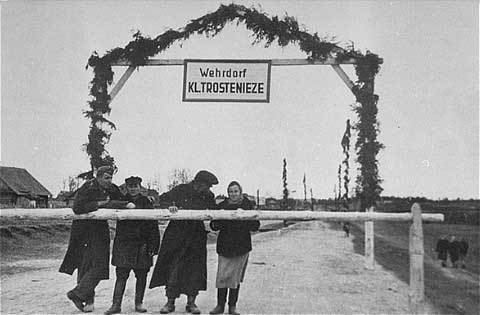
On 28 June 1944, as the Red Army approached the region, the Germans blew up the camp as part of Sonderaktion 1005, an operation to destroy evidence of genocide. But the Soviets are said to have discovered 34 grave-pits, some of them measuring as much as 50 meters (160 ft) in length and three to four meters (9.8–13 ft) in depth, located in the Blagovshchina Forest some 500 meters (1,600 ft) from the Minsk–Mogilev highway according to the special report prepared by the Soviet Extraordinary State Commission in the 1940s. Only a few Jewish prisoners survived Maly Trostenets. They were liberated by the Red Army and gave first witness testimonies about its existence on 7 July 1944.
According to modern historians of the Holocaust, original estimates of the number of people killed at Trostinets were greatly exaggerated by functionaries of the Soviet State Commission; ranging from 200,000 to more than half a million. Yad Vashem in Jerusalem and other researchers estimate the true number of victims at 60,000–65,000 Jews.
Perpetrators
Only a few perpetrators of the Holocaust from Trostinets were brought to justice after the war. Among them was Eduard Strauch, who died in a Belgian prison in 1955. In 1968 a court in Hamburg sentenced to life imprisonment three low-ranking SS men – Rottenführer Otto Erich Drews, Revieroberleutnant Otto Hugo Goldapp, and Hauptsturmführer Max Hermann Richard Krahner – German overseers of the Jewish Sonderkommando 1005 who were recognized as guilty of murdering the laborers forced to cover up the traces of the crimes in 1943. Several people were also convicted during trials in West Germany and the USSR, although they were not at Maly Trostenets, but for the crimes committed in the wider area of Minsk.
Heinrich Seetzen committed suicide in a British POW camp. Heinrich Eiche fled to Argentina after the war and all trace of him was lost. Gerhard Maywald settled after the war in West Germany. In 1970, the public prosecutor's office in Koblenz ended an investigation against him "because of the absence of sufficient evidence of guilt". On 4 August 1977 Maywald was sentenced to four years' imprisonment for murder and complicity involving 8,000 Jews in Latvia.
Currently nothing remains of the actual camp other than a row of poplars planted by the inmates as part of the natural border of the camp. The site is scheduled for reconstruction and development.
Camp's name
In Belarusian the name is Малы Трасцянец (pronounced [maˈlɨ trasʲtsʲaˈnʲets]), transliterated as Maly Tras’tsyanyets; in Russian it is Малый Тростенец. Alternative romanizations and the placename’s German variants include Maly Trostinets, Maly Trostinez, Maly Trostenez, Maly Trostinec and Klein Trostenez – literally, "Little" Tras’tsyanyets) as opposed to the neighboring locality named Вялікі Трасцянец or "Large" Tras’tsyanyets).
Known victims
Commemoration
A memorial built at the site of the camp attracts thousands of visitors annually, especially after travel restrictions eased with the dissolution of the Soviet Union.
